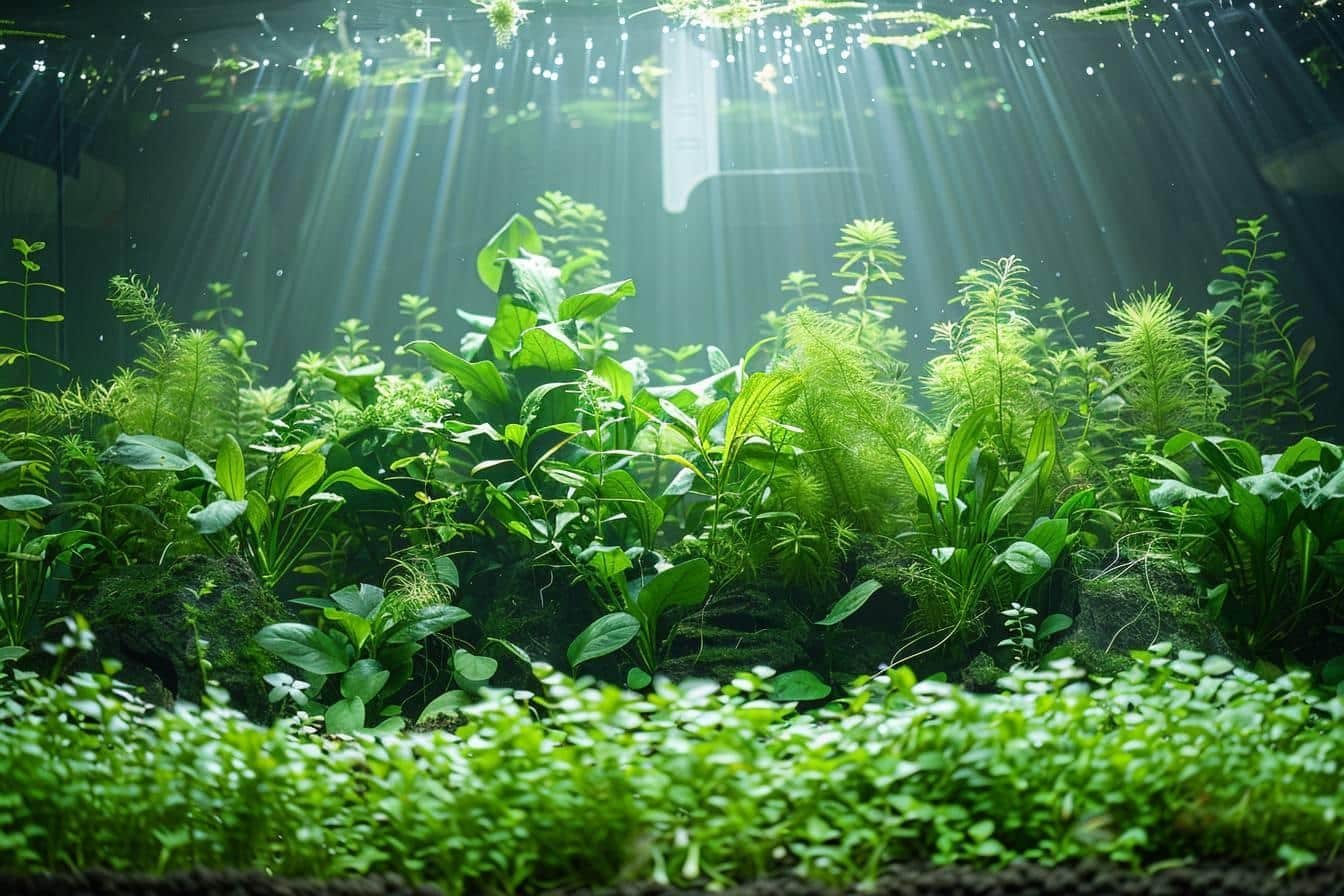The article in brief
Aquascaping, the exciting art of creating miniature waterscapes, requires a few key elements to get you started:
- Choose a suitable aquarium and basic equipment
- Opt for a fertile substrate and a efficient lighting
- Select robust plants and easy to maintain
- Planning the design and setting the scene with patience
- Ensuring regular maintenance to maintain the balance of the ecosystem
L'aquascaping is an exciting art form that allows you to create truly miniature aquatic landscapes. As someone who's been passionate about aquariums since I was very young, I've been lucky enough to help many beginners take their first steps. Believe me, with the right advice and a little patience, you too can create magnificent aquascapes! In this article, I'm going to share with you my tips for getting off to a good start in this captivating discipline.
The basics of aquascape for beginners
To create your first aquascape beginnerTo get started, you'll need a few essentials. First of all, choose an aquarium that suits your desires and the space you have available. A nano aquarium can be an excellent choice for a start. Don't forget that the size of the aquarium will influence the complexity of maintenance!
Next, you'll need the basic equipment:
- A fertile substrate to feed your plants
- The right filtration system
- High-performance lighting to encourage plant growth
- Easy-care aquatic plants
- Decorative elements such as rocks and roots
I remember my first aquascape: I opted for a small 30-litre tank and ultra-resistant plants like theAnubias and the Cryptocoryne. A word of golden advice: start simple and you'll have plenty of time to make your design more complex later on!
Choosing the right substrate
The choice of substrate is fundamental to the success of your aquascape. Choose a substrate specifically for aquascaping, rich in nutrients. These substrates are designed to encourage plant growth and maintain a biological balance in your aquarium.
The importance of lighting
The right lighting is essential for the health of your plants. Choose a special aquarium LED strip that offers a full spectrum of light. Don't hesitate to invest in a programmable system to simulate natural day/night cycles.
Plant selection
For a aquascape beginnerWhen it comes to planting, choose hardy plants that are easy to care for. Here are a few suggestions:
| Name of the plant | Level of difficulty | Ideal location |
|---|---|---|
| Anubias nana | Easy | Foreground |
| Vallisneria | Easy | Background |
| Java moss | Very easy | Decoration |
Creating your first aquascape: key stages
Now that you have all the elements in hand, let's get down to the nitty-gritty of creating your aquascape. I'll guide you step by step through the creative process. Get ready for a unique experience!
Design planning
Before diving in head first, take the time to plan your aquascape. Take inspiration from the different styles that exist: natural, iwagumi, submerged forest... Make sketches and visualise the arrangement of your plants and decorations. This is the most exciting stage - let your imagination run wild!
Setting the scene
Start by laying out your substrate, creating a relief. Then add your rocks and roots to structure the space. A little professional tip: use aquarium glue to securely fix your decorative elements. It's saved me a lot of trouble in the past!
Planting and filling
Once the decor is in place, move on to planting. Start with the plants in the background, then those in the middle ground and finish with the foreground. Gently fill your aquarium, pouring the water over a plate so as not to disturb your creation. And voilà, your first aquascape has come to life!

Maintaining and upgrading your aquascape
Congratulations, you've completed your first aquascape! But the adventure is just beginning. Regular maintenance is the key to keeping your creation healthy and evolving over time.
Here are some essential tasks to perform:
- Weekly water changes (approximately 25% of volume)
- Regular pruning of plants to maintain the desired shape
- Cleaning the filter and windows
- Monitoring of water parameters (pH, nitrates, etc.)
Don't forget that patience is your best ally. Rome wasn't built in a day, and the same goes for a beautiful aquascape! It took me several months before I was really satisfied with my first tank. The important thing is to learn from your mistakes and enjoy the process.
Adding CO2: not essential to get started
You'll often hear about adding CO2 to boost plant growth. This is indeed a plus, but it's not essential if you're just starting out. Concentrate first on mastering the basics before considering this extra step.
The evolution of your passion
Over time, you'll gain experience and confidence. You'll then be able to embark on more ambitious projects, experiment with new techniques and even take part in competitions such as the IAPLC (International Aquatic Plants Layout Contest). Who knows, maybe you'll become the next Takashi Amano, the father of modern aquascaping!
Never forget that aquascaping is first and foremost a hobby. Have fun, learn from your mistakes and be proud of your creations. Every aquascape is unique and tells a story. What will yours be?
External sources :
wiki aquaculture
wiki fish farming
